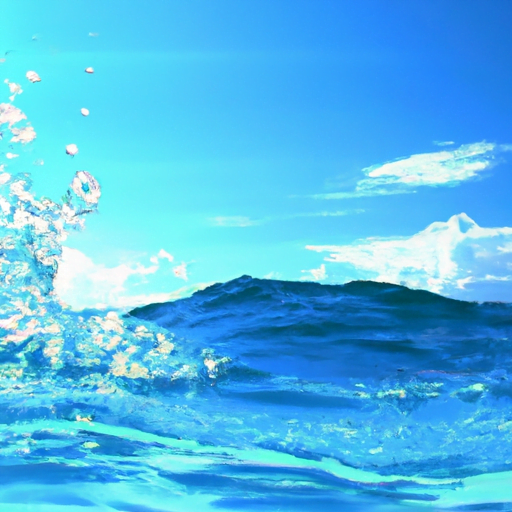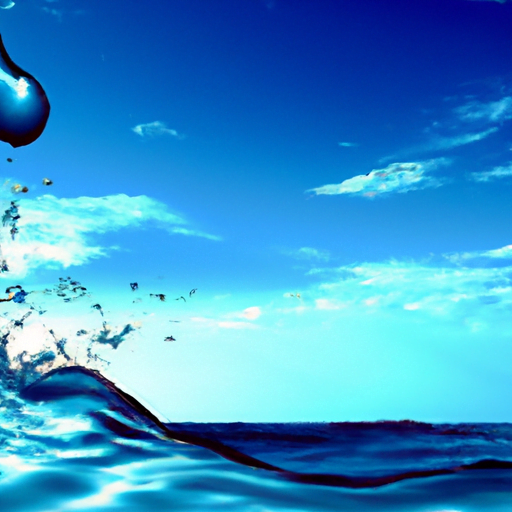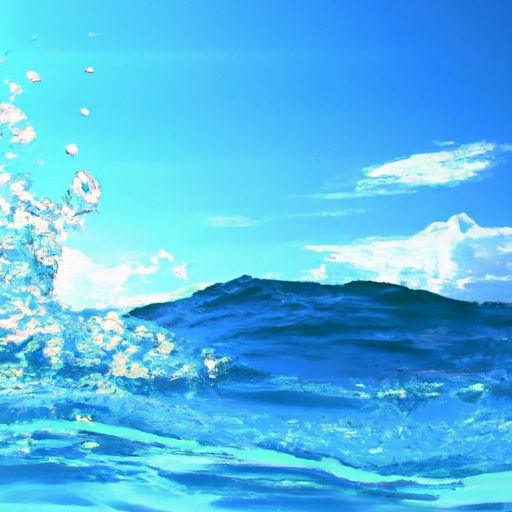Have you ever wondered why it’s so difficult to generate freshwater? I mean, it’s just water, right? But the process of creating freshwater is actually quite complex and fascinating. In this article, we’ll delve into the science behind freshwater generation and explore the various methods used to turn seawater or contaminated water into clean, drinkable freshwater. So if you’re curious to learn more about this topic, keep reading!
Living off the grid often means relying on alternative sources of water, especially in areas where freshwater resources are scarce. But why is it that we can’t simply create our own freshwater? Well, the main reason is that most of the Earth’s water is either salty or contaminated, which makes it unsuitable for drinking or agricultural purposes. This is where freshwater generation comes in. By using various techniques, scientists and engineers are able to remove the impurities and ensure that the water is safe and clean for consumption.
There are several methods used to generate freshwater and each of them involves different scientific principles. For example, one commonly used method is desalination, which is the process of removing salt and other minerals from seawater. Another method is distillation, where water is heated and the vapor is then condensed into liquid form. Additionally, there are filtration systems that rely on certain materials to trap impurities and produce clean water. In the next paragraphs, we’ll dive into more detail about these methods and how they work.
So, if you’ve ever been curious about the science behind freshwater generation, you’re in for a treat. In the upcoming article, we’ll explore each method in more detail and discover the fascinating scientific principles that enable us to turn saltwater or contaminated water into clean and drinkable freshwater. By the end of it, you’ll have a better understanding of why generating freshwater is not a simple task and why it’s so crucial for our survival. So stay tuned and get ready to quench your thirst for knowledge about freshwater generation!

Exploring the Science Behind Freshwater Generation
Living off the grid or in remote areas often poses challenges, especially when it comes to access to clean and fresh water. Yet water is a fundamental resource that is essential for our survival and well-being. Understanding the science behind freshwater generation can help us tackle the challenges of water scarcity and ensure a sustainable future.
Water as a Fundamental Resource
Water is not just a beverage to quench our thirst; it is a fundamental resource that supports life on Earth. It plays a crucial role in various biological, physical, and chemical processes. From hydration and digestion to regulating body temperature and facilitating transportation, the importance of water in our daily lives cannot be overstated.
Challenges of Access to Clean Water
One of the major challenges we face today is the scarcity of clean water. Despite the fact that approximately 70% of the Earth’s surface is covered in water, only about 2.5% of it is freshwater, with the rest being saline or saltwater. Moreover, out of this freshwater, a significant portion is trapped in glaciers, ice caps, and underground aquifers, making it inaccessible for our immediate use.
Additionally, pollution and contamination of freshwater sources further add to the challenge of accessing clean water. Industrial activities, improper waste disposal, and agricultural practices contribute to the contamination of rivers, lakes, and groundwater reserves. This contamination poses serious health risks and can lead to the spread of waterborne diseases.
Understanding the Water Cycle
To comprehend freshwater generation, we must first understand the water cycle. The water cycle is a continuous process wherein water circulates between various reservoirs, such as the ocean, atmosphere, land, and living organisms. It involves four main stages: evaporation, condensation, precipitation, and collection.
Evaporation and Transpiration
Evaporation occurs when the sun’s heat causes water to change from a liquid state to a gaseous state, forming water vapor. This process primarily takes place in bodies of water, such as oceans, lakes, and rivers, but also occurs on land. Transpiration is a similar process that takes place in plants, where water is absorbed through the roots and released into the atmosphere through small openings in their leaves called stomata.
Condensation and Precipitation
After evaporation, water vapor rises into the atmosphere. As it reaches higher altitudes, the cooler temperatures cause the water vapor to condense into tiny water droplets, forming clouds. When these droplets merge and become heavy enough, precipitation occurs. This could be in the form of rain, snow, hail, or sleet, depending on the atmospheric conditions.
Natural Freshwater Sources
Nature provides us with various sources of freshwater, including rivers, streams, lakes, reservoirs, and groundwater. These sources are essential for both human consumption and supporting ecosystems.
Rivers and Streams
Rivers and streams are dynamic bodies of water that play a significant role in freshwater generation. They act as natural conduits, transporting water from higher elevations to lower elevations. They receive water from rain, snowmelt, and underground sources, contributing to their constant flow.
Lakes and Reservoirs
Lakes and reservoirs are freshwater bodies that are created by geological processes or through human intervention, such as the construction of dams. They store large amounts of water and help regulate its distribution. Lakes and reservoirs also provide habitats for a diverse range of aquatic life.
Groundwater
Groundwater is water that is stored beneath the Earth’s surface in rocks and soil. It is extracted through wells and is often considered a reliable source of freshwater. Groundwater levels can be replenished through natural processes, such as rainfall and surface water infiltration.
Human Intervention in Freshwater Generation
To overcome the challenges of water scarcity, humans have developed various techniques to generate freshwater. These techniques involve processes such as desalination, reverse osmosis, and distillation.
Desalination Process
Desalination is a process that involves removing salt and other impurities from saltwater sources, making it suitable for human consumption. It is particularly essential in coastal regions where seawater is abundant but freshwater is scarce.
Reverse Osmosis
Reverse osmosis is a common desalination technique that uses a semipermeable membrane to separate salt and other impurities from water. It works by applying pressure to the saltwater, forcing it through the membrane while leaving behind the freshwater on the other side.
Distillation
Distillation is another freshwater generation process that involves heating water to create steam and then collecting and condensing the steam to form pure water. This process is effective in removing not only salt but also contaminants such as heavy metals and bacteria.

Exploring Desalination Techniques
Desalination techniques have evolved over the years to improve efficiency and effectiveness. Let’s take a closer look at some of the commonly used methods.
Multi-Stage Flash Distillation
Multi-Stage Flash (MSF) distillation is a desalination technique that utilizes multiple stages of evaporation to remove salt from seawater. It involves heating seawater under high pressure, causing it to evaporate. The resulting steam is then condensed, producing freshwater.
Reverse Osmosis Desalination
Reverse osmosis desalination, as mentioned earlier, is a popular technique that uses pressure and a membrane to separate salt from water. It has become more efficient and cost-effective over time, making it a widely adopted method for freshwater generation in both industrial and domestic settings.
Electrodialysis Reversal
Electrodialysis Reversal (EDR) is a desalination method that uses ion-exchange membranes and an electric current to remove salt from water. This process involves separating the salt ions from the water molecules, resulting in freshwater.
Environmental Impacts
While freshwater generation techniques provide a solution to water scarcity, they also have environmental implications that must be taken into consideration.
Energy Consumption and Carbon Footprint
Desalination processes, especially those involving reverse osmosis, require a significant amount of energy. This energy is often derived from fossil fuels, which contribute to greenhouse gas emissions and climate change. Finding sustainable energy sources to power these processes is crucial to minimizing their environmental impact.
Disposal of Brine Concentrate
During desalination processes, a byproduct called brine concentrate is generated. This highly concentrated saltwater can be harmful to marine life and ecosystems if not properly managed. Proper disposal methods and the development of innovative technologies to mitigate its impacts are essential.
Innovative Approaches to Freshwater Generation
To address the challenges and environmental impacts associated with traditional freshwater generation methods, scientists and researchers are exploring innovative techniques that are more sustainable and efficient.
Solar Desalination
Solar desalination harnesses the power of the sun to produce freshwater. This approach uses solar energy to evaporate water and collect the condensed vapor, leaving behind salt and other impurities. It is a promising solution that reduces reliance on conventional energy sources and minimizes environmental impact.
Forward Osmosis
Forward osmosis is a relatively new concept in water treatment. It involves using a concentrated solution as a draw solute to pull freshwater through a semipermeable membrane. This method requires less energy compared to traditional reverse osmosis and has the potential for further development.
Nanotechnology
Nanotechnology offers potential solutions for freshwater generation by utilizing materials at the nanoscale to improve processes such as filtration and water purification. Nanomaterials can enhance the efficiency and selectivity of membranes, leading to more effective removal of contaminants and improved freshwater quality.
Freshwater Management and Conservation
While freshwater generation techniques are important, it is equally crucial to focus on freshwater management and conservation. Implementing sustainable practices can help ensure the availability of clean water for future generations.
Water Recycling and Reuse
Water recycling and reuse involve treating and reusing wastewater for various purposes, such as irrigation, industrial processes, and even drinking water. This reduces the strain on freshwater sources and helps conserve this valuable resource.
Rainwater Harvesting
Rainwater harvesting involves collecting and storing rainwater for later use. It can be as simple as using containers or more complex systems that channel rainwater into tanks. This practice is particularly beneficial in areas with erratic rainfall patterns or limited access to freshwater sources.
Sustainable Agriculture
Agriculture accounts for a significant portion of freshwater usage worldwide. Adopting sustainable agricultural practices, such as efficient irrigation methods, crop rotation, and water-saving technologies, can help reduce water consumption and minimize the environmental impacts of agriculture.
Challenges and Future Prospects
Despite significant advancements in freshwater generation techniques, challenges persist in achieving widespread affordability, accessibility, and sustainable practices.
Affordability and Accessibility
Many of the technologies used for freshwater generation are expensive and require significant investment. Ensuring affordable access to clean water for all remains a challenge, especially for marginalized communities and developing regions. Continued research and innovation are needed to develop cost-effective solutions.
Technological Advancements
Advancements in technology, such as membrane materials, energy-efficient processes, and improved water treatment methods, are crucial in enhancing freshwater generation techniques. Continued research and development can lead to more efficient, sustainable, and accessible methods.
Policy Implementation
Effective policies and regulations play a vital role in promoting sustainable freshwater generation and management. Governments and organizations need to prioritize water conservation and invest in infrastructure and systems that improve access to clean water for all.
Conclusion
Exploring the science behind freshwater generation is essential to addressing the global water scarcity crisis and ensuring a sustainable future. By understanding the water cycle, natural freshwater sources, human intervention techniques, and innovative approaches, we can effectively generate freshwater while minimizing environmental impact. However, challenges in affordability, accessibility, and sustainable practices must be addressed through continued research, technological advancements, and policy implementation. It is crucial that we all play our part in conserving and responsibly using this precious resource for the benefit of future generations.




